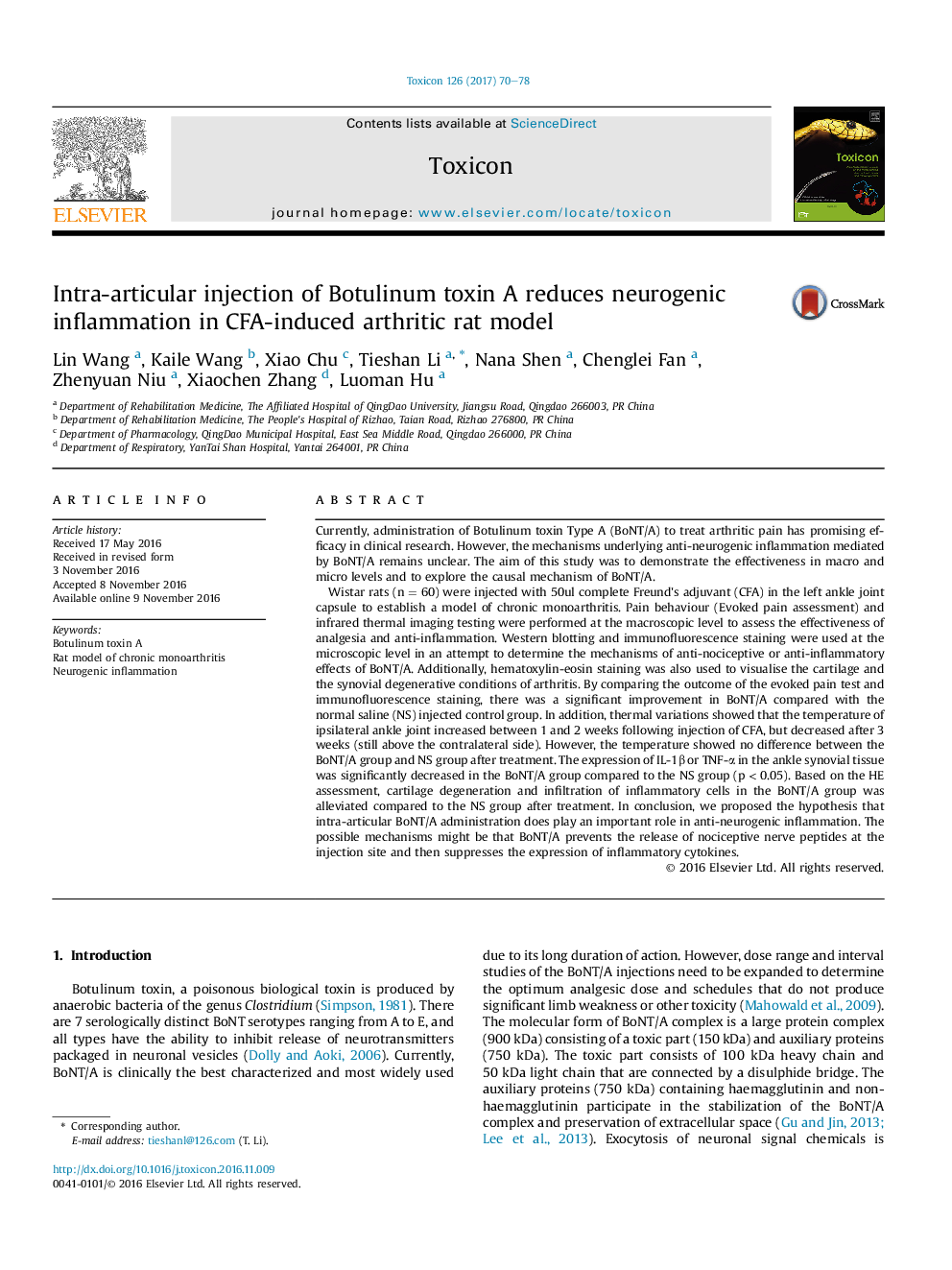| کد مقاله | کد نشریه | سال انتشار | مقاله انگلیسی | نسخه تمام متن |
|---|---|---|---|---|
| 5519383 | 1544110 | 2017 | 9 صفحه PDF | دانلود رایگان |

- Verified the anti-neurogenic inflammatory effect at the macroscopic and microcosmic level.
- BoNT/A may prevent the release of nociceptive nerve peptides and then suppresses the expression of inflammatory cytokines.
- Determined that it is unclear whether BoNT/A exhibits anti-inflammatory properties that have a direct effect.
Currently, administration of Botulinum toxin Type A (BoNT/A) to treat arthritic pain has promising efficacy in clinical research. However, the mechanisms underlying anti-neurogenic inflammation mediated by BoNT/A remains unclear. The aim of this study was to demonstrate the effectiveness in macro and micro levels and to explore the causal mechanism of BoNT/A.Wistar rats (n = 60) were injected with 50ul complete Freund's adjuvant (CFA) in the left ankle joint capsule to establish a model of chronic monoarthritis. Pain behaviour (Evoked pain assessment) and infrared thermal imaging testing were performed at the macroscopic level to assess the effectiveness of analgesia and anti-inflammation. Western blotting and immunofluorescence staining were used at the microscopic level in an attempt to determine the mechanisms of anti-nociceptive or anti-inflammatory effects of BoNT/A. Additionally, hematoxylin-eosin staining was also used to visualise the cartilage and the synovial degenerative conditions of arthritis. By comparing the outcome of the evoked pain test and immunofluorescence staining, there was a significant improvement in BoNT/A compared with the normal saline (NS) injected control group. In addition, thermal variations showed that the temperature of ipsilateral ankle joint increased between 1 and 2 weeks following injection of CFA, but decreased after 3 weeks (still above the contralateral side). However, the temperature showed no difference between the BoNT/A group and NS group after treatment. The expression of IL-1β or TNF-α in the ankle synovial tissue was significantly decreased in the BoNT/A group compared to the NS group (p < 0.05). Based on the HE assessment, cartilage degeneration and infiltration of inflammatory cells in the BoNT/A group was alleviated compared to the NS group after treatment. In conclusion, we proposed the hypothesis that intra-articular BoNT/A administration does play an important role in anti-neurogenic inflammation. The possible mechanisms might be that BoNT/A prevents the release of nociceptive nerve peptides at the injection site and then suppresses the expression of inflammatory cytokines.
Journal: Toxicon - Volume 126, February 2017, Pages 70-78